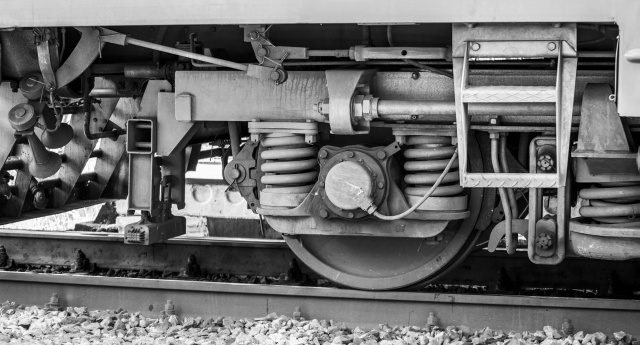Large and hot coiled compression springs
Contents |
[edit] Introduction
Compression springs are a widely used across several different sectors of manufacturing, from engineering to trains. Being one of the first to have been invented, it is one of the most popular types of spring.
Hot coiled compression springs undergo a heated treatment, to produce their hardened and sharpened surface, and can be tailor-made specifically to meet customer requirements.
Large compression springs are open coiled springs which are wound from a purpose made machine in the distinct helical shape and can produce a considerable amount of force, suited for application in large-scale manufacturing operations.
[edit] How They Are Made
In the process of making a hot coiled compression spring, a wire bar, varying in size, length and width is austenitised, or heated to around 850°C, to change its crystal structure and render it more malleable. It is then formed into its coil shape around a large machine, dropped into oil to cool, and finally processed to give the finished product.
In a similar process to hot coiling, large compression springs are fed into a purpose-built machine, which uses force to spin the spring into its helical shape. Due to the size, they are normally ‘caught’ on a tray, where they are processed into the final product.
[edit] Applications
[edit] Railway Industry
Both large and hot coiled compression springs are used within the railway industry.
There are two main suspension systems widely used in the manufacture of trains. The first being the primary suspension system, which uses springs to support the structural suspension of the carriage and the entire train.
The secondary suspension system focuses on the comfort of passengers through creating an airbag-like effect, in a process called pneumatic suspension. This is also used in freight transportation to reduce the impact of the movement from the journey on fragile goods.
[edit] Offshore Industry
Springs are common components in offshore industries, due to their durability, strength, and ability to withstand highly-exposed environments. Large and hot coiled compression springs are suited for this industry, as they are a much larger, stronger alternative, and can be tailor-made to fit any machine or use.
[edit] Other Applications
Other applications include:
- The electric power industry.
- The mining and construction industry.
- Paper and pulp manufacture.
- The automotive industry.
Large-scale, durable components are essential in these fields, not only due to their functional aspects but also for their impressive safety features.
[edit] Sizes Available
The size of both types of these springs vary completely due to the requirements of the customer. Lengths can be up to 1500 mm, 600 mm in width, and bar/wire width can be up to 65 mm.
All springs can be made to measure and come in a range of finishes, suitable for any specific job specifications.
--European Springs and Pressings Ltd
[edit] Find Out More
[edit] Related articles on Designing Buildings Wiki
- Spring materials.
- Key qualities of springs
- Compression springs
- Tension springs v torsion springs
- History of the spring
- Spotlight on Compression Springs
- The Difference Between Tension and Torsion Springs
- The Multiple Uses of Compression Springs
- Using Springs in Construction to Prevent Disaster
- The Uses of Wire Forms Within the Construction Industry
- Types of spring.
Featured articles and news
RTPI leader to become new CIOB Chief Executive Officer
Dr Victoria Hills MRTPI, FICE to take over after Caroline Gumble’s departure.
Social and affordable housing, a long term plan for delivery
The “Delivering a Decade of Renewal for Social and Affordable Housing” strategy sets out future path.
A change to adoptive architecture
Effects of global weather warming on architectural detailing, material choice and human interaction.
The proposed publicly owned and backed subsidiary of Homes England, to facilitate new homes.
How big is the problem and what can we do to mitigate the effects?
Overheating guidance and tools for building designers
A number of cool guides to help with the heat.
The UK's Modern Industrial Strategy: A 10 year plan
Previous consultation criticism, current key elements and general support with some persisting reservations.
Building Safety Regulator reforms
New roles, new staff and a new fast track service pave the way for a single construction regulator.
Architectural Technologist CPDs and Communications
CIAT CPD… and how you can do it!
Cooling centres and cool spaces
Managing extreme heat in cities by directing the public to places for heat stress relief and water sources.
Winter gardens: A brief history and warm variations
Extending the season with glass in different forms and terms.
Restoring Great Yarmouth's Winter Gardens
Transforming one of the least sustainable constructions imaginable.
Construction Skills Mission Board launch sector drive
Newly formed government and industry collaboration set strategy for recruiting an additional 100,000 construction workers a year.
New Architects Code comes into effect in September 2025
ARB Architects Code of Conduct and Practice available with ongoing consultation regarding guidance.
Welsh Skills Body (Medr) launches ambitious plan
The new skills body brings together funding and regulation of tertiary education and research for the devolved nation.
Paul Gandy FCIOB announced as next CIOB President
Former Tilbury Douglas CEO takes helm.
UK Infrastructure: A 10 Year Strategy. In brief with reactions
With the National Infrastructure and Service Transformation Authority (NISTA).
























